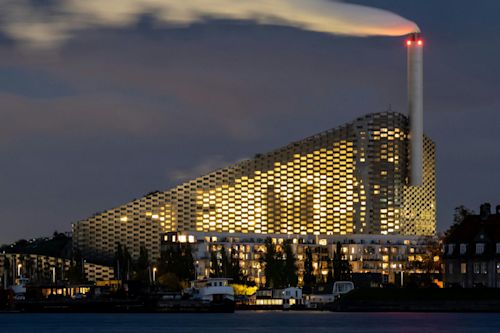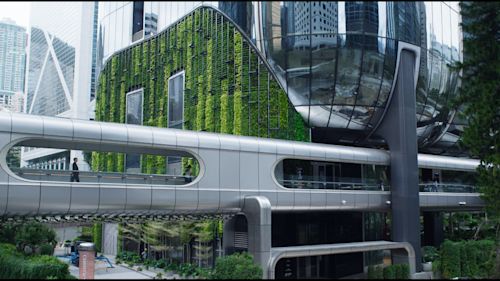
In our cities, where environmental and social challenges intersect with the needs of everyday life, a new paradigm is emerging: sustainable urban living. This issue affects both traditional cities and developing smart cities. Faced with growing energy consumption, and building inefficiency, there is a clear need for a housing model that can respond in a systemic and intelligent way.
In this context, passive houses offer a concrete solution—supporting sustainable, efficient construction that places human well-being at its core.
Passive Houses: A New Standard for Smart Architectural Design

Passive houses—also known as Passivhaus—are more than just low-energy buildings; they represent a smart, integrated approach to architectural design, where every element is conceived to maximize both energy efficiency and living comfort. The concept originated in Germany in the late 1980s through the collaboration of professors Wolfgang Feist and Bo Adamson, who developed the Passivhaus Standard. Their goal was to create a construction model capable of drastically reducing the energy consumption of buildings. The first examples built under this standard appeared in Darmstadt, Germany.
The Passivhaus standard is based on a series of strict principles: advanced thermal insulation, high-performance windows, controlled mechanical ventilation with heat recovery, airtight construction, and the elimination of thermal bridges. Crucially, passive house design is not about adding a specific technology to an existing building, but about following an integrated design approach from the outset. The principles of sustainability are embedded in every stage of the design process—not applied afterward—shaping every decision to ensure efficiency, comfort, and environmental harmony.
The result is not only up to 90% lower energy consumption compared to conventional buildings, but also a consistently healthy, quiet, and thermally stable indoor environment.
Why Cities Are Ideal for Passive Houses

Passive houses perform especially well in high-density environments like cities. The compact forms typical of urban buildings help minimize heat exchange with the outside, enhancing energy efficiency. At the same time, their controlled ventilation systems ensure a constant supply of clean, filtered air—an essential benefit in areas affected by traffic and pollution, contributing significantly to indoor comfort and overall well-being.
There are already compelling examples of this approach in action. The Bahnstadt district in Heidelberg, Germany, is currently the largest urban area in the world built entirely to Passive House standards. Spanning roughly 116 hectares, every building in the district is certified under the Passivhaus protocol, with energy consumption for heating kept below 15 kWh/m² per year.
Benefits of Passive Houses: Environmental, Economic, and Social

Passive houses significantly reduce CO₂ emissions, playing a vital role in the shift toward more sustainable urban living. Their extremely low energy consumption leads to lower utility costs, making the initial investment financially viable over the medium to long term.
They also offer exceptional living comfort, thanks to consistent indoor temperatures, the absence of drafts, reduced noise, and a continuous flow of filtered air. These features contribute to improved health and overall quality of life for occupants.
Moreover, passive houses can be an effective tool in addressing energy poverty. By making sustainable construction more accessible, they enable broader social inclusion. A noteworthy example is LILAC (Low Impact Living Affordable Community) in Leeds, UK—a project that merges environmental responsibility with social equity through a cooperative housing model.
Obstacles to Overcome and Strategies for Change

Among the main barriers to the widespread adoption of passive houses are the perception of high initial costs and the lack of technical expertise. To support a shift toward sustainable building practices, it is crucial to implement public incentives, provide professional training programs, and raise awareness among citizens and public authorities.
In Norway, the FutureBuilt programme illustrates how a strategic mix of active policy, education, and monitoring can establish passive houses as a standard in urban development. Launched in 2010, FutureBuilt aims to promote low-carbon buildings and neighborhoods by reducing greenhouse gas emissions by 50% compared to traditional norms. Through a series of pilot projects in residential, educational, and urban contexts, the initiative shows that sustainability, high-quality architecture, and livable cities can go hand in hand.
Passive Houses: A Ready Solution for the Smart Cities of the Future

Passive houses are not a utopian ideal—they are a real, certifiable solution already within reach. In a world undergoing rapid change, constructing buildings that offer both energy efficiency and exceptional comfort is not only an opportunity, but a necessity.
Embracing intelligent architectural design has become a strategic imperative for anyone envisioning more resilient, inclusive, and human-centered cities. Passive houses point the way forward: living in the future is possible, and it starts with thoughtful, well-designed spaces.



